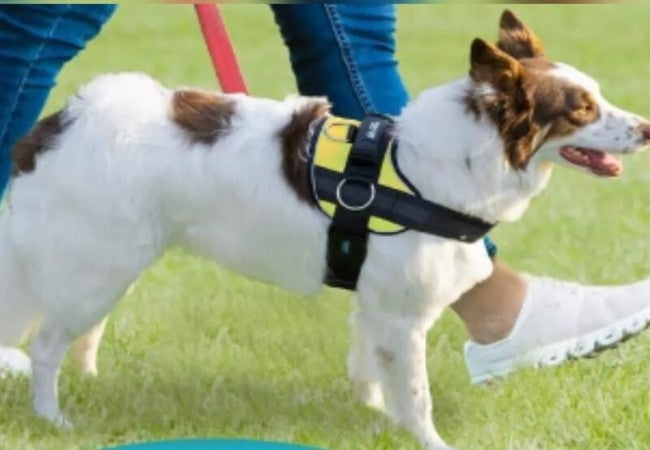How to Choose and Fit a No-Pull Dog Harness: A Vet Approved 2025 Guide 🐶🐾

In this article
How to Choose and Fit a No-Pull Dog Harness: A Vet Approved 2025 Guide 🐶🐾
By Dr. Duncan Houston BVSc
Walking your dog should be a pleasant experience for both of you. 🐕🦺 If your pup tends to pull on the leash, a no-pull harness can be a game-changer. Let's explore how to choose and fit the right harness to make your walks more enjoyable and safe. 🧠
🔍 Understanding No-Pull Harnesses
No-pull harnesses are designed to discourage pulling behavior by redirecting your dog's movement and distributing pressure evenly across their body. Unlike traditional collars that can strain the neck, these harnesses offer a more humane and effective solution for leash training.
🛠️ Types of No-Pull Harnesses
- Front-Clip Harnesses: The leash attaches at the chest, guiding your dog back towards you when they pull. Ideal for training and control.
- Dual-Clip Harnesses: Offer both front and back leash attachment points, providing versatility for different training stages.
- Head Halters: Fit around the dog's muzzle and head, giving control over the direction of the head. Suitable for strong pullers but require proper introduction.
📏 Measuring and Fitting the Harness
Proper fit is crucial for comfort and effectiveness. Follow these steps:
- Measure the Girth: Use a soft measuring tape to measure around the widest part of your dog's chest, just behind the front legs.
- Measure the Neck: Measure around the base of your dog's neck where the collar would sit.
- Refer to Sizing Charts: Different brands have varying sizing, so always consult the manufacturer's chart.
- Adjust for Fit: The harness should be snug but not tight. You should be able to fit two fingers between the harness and your dog's body.
Ensure that the harness does not chafe or restrict movement. Regularly check the fit, especially for growing puppies.
🎯 Training Tips with a No-Pull Harness
- Positive Reinforcement: Reward your dog with treats and praise when they walk calmly beside you.
- Consistency: Use the harness during every walk to reinforce the desired behavior.
- Short Sessions: Begin with short walks to help your dog adjust to the new harness.
- Patience: Understand that training takes time, and avoid punishment-based methods.
Combining the harness with consistent training will yield the best results.
📱 Enhance Training with Trusted Resources
For additional support and personalized guidance, consider these resources:
- Ask A Vet: Connect with veterinary professionals for expert advice. 🩺
Empower your journey as a pet parent by downloading the Ask A Vet app today and ensure your furry friend thrives in 2025 and beyond! 📲🐾






